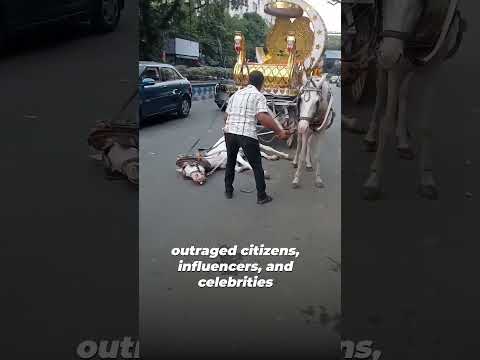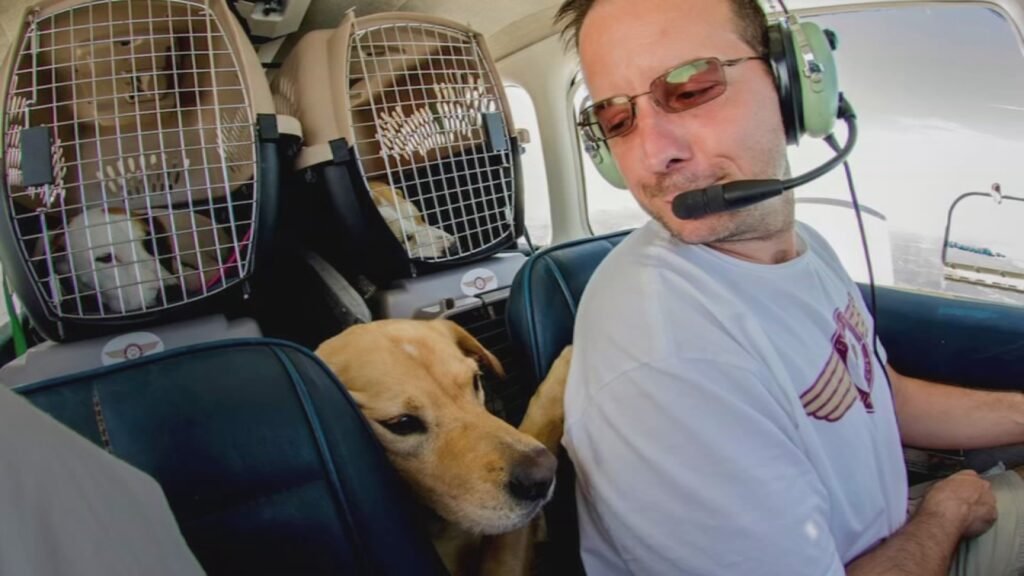A horse collapsed in the street—dehydrated, emaciated, and unable to move.
Instead of receiving immediate compassion or care, it was struck as it lay helpless on the pavement.
This incident wasn’t a tragic anomaly—it’s a disturbing symptom of a larger, ongoing crisis in the name of “entertainment” and tourism. At Sustainable Action Now, we are sounding the alarm on the abuse that continues to plague horses used in the horse-drawn carriage industry.
🛑 It’s time to say no to horse-drawn carriage rides. It’s a foolish practice, and wanting to use them for sightseeing is weak. There are better ways to see parts of any city than having a horse carry you around like it’s the 1500s.
👉 Read more about the ongoing abuse and how to take action in our Animal Abuse & Wildlife Exploitation section.
💔 Behind the Romance: The Dark Reality for Carriage Horses
Horse-drawn carriages are often marketed as romantic, nostalgic experiences—ideal for weddings, city tours, or holiday festivities. But behind this charming facade is a world of suffering, overwork, and neglect.
These animals, often older or rescued from slaughter pipelines, are forced to:
- Walk on hard pavement for hours, often in extreme heat or cold
- Breathe in toxic vehicle exhaust
- Haul heavy carriages while dehydrated, underfed, or injured
- Endure loud noises, traffic chaos, and harsh handling from operators
The horse in this latest report collapsed from dehydration and exhaustion—and was struck while lying on the ground, further traumatizing the already suffering animal. The video of the incident went viral, sparking public outrage. But sadly, this is not an isolated case.
This cruelty is happening in cities across the country—and around the world.
🧠 Why Horses Don’t Belong in City Streets
Horses are intelligent, sensitive beings who are highly attuned to their environments. In their natural state, they roam freely in open spaces with access to food, water, rest, and companionship.
In urban environments, they face:
- 🔊 Constant noise and confusion
- 🚗 Dangerous traffic conditions
- 🥵 Extreme weather without shelter
- 🧍♂️ Long hours with little to no breaks
- ⚠️ Physical injuries from overuse and improper equipment
Carriage rides may last only 15–30 minutes for the rider, but for the horse, it’s a relentless workday that can stretch for hours—with no choice in the matter and no escape.
📸 One Story, Thousands of Victims
The recent case of the collapsed horse is a wake-up call for anyone who believes animal exploitation is “harmless” if it looks quaint or traditional.
This is what exploitation looks like when the camera isn’t rolling:
- Horses collapsing in the heat while tourists snap photos
- Open sores under ill-fitting harnesses
- Horses being whipped to move when they’re too tired or weak
- Painful hoof and joint issues from walking on concrete daily
It’s not just unethical—it’s inhumane. And it’s happening in plain sight.
🌎 Cities Are Taking a Stand—So Can You
Public pressure is working. Several cities around the world are starting to ban or phase out horse-drawn carriage rides, including:
- 🗽 New York City – Advocates continue to push for a full ban, and growing public support is making waves.
- 🌆 Chicago – Phased out carriage rides entirely in 2021.
- 🇪🇸 Barcelona – Banned them due to safety and welfare concerns.
- 🏙️ Other U.S. cities like Salt Lake City, Camden (New Jersey), and Key West have taken similar steps.
Now is the time to demand more cities follow suit.
🚫 What You Can Do: Take Action for Carriage Horses
Here’s how you can help bring an end to the suffering:
- Never ride a horse-drawn carriage.
Choose animal-free alternatives like pedicabs, electric carts, or walking tours instead. - Educate others.
Share stories like this to raise awareness and change hearts. - Support local legislation.
Contact city officials to advocate for a ban in your community. Demand compassionate transportation options. - Use your voice online.
Follow and support organizations working to protect animals. Repost credible articles like this and engage with city tourism boards. - Donate to rescue groups.
Many formerly abused carriage horses are rescued and rehabilitated by sanctuaries that rely on public support.
👉 Learn more about ongoing cases of cruelty and how you can help in our Abuse of Animals & Wildlife category.
🐎 A Better Future Is Possible
At Sustainable Action Now, we believe in building a future where animals are respected, not ridden into exhaustion. Where tradition does not outweigh compassion. And where cruelty is no longer accepted as part of tourism or urban life.
The collapse of this horse is not just a tragedy—it’s a call to action. We cannot allow this suffering to be normalized. It’s time to move away from outdated and abusive practices and toward a future where no animal is forced to entertain, labor, or suffer for our convenience.
Say NO to horse-drawn carriages.
Say YES to ethical tourism and animal welfare.
Take the reins—let’s build a more compassionate world.
📢 Join the movement.
Be the voice for animals who cannot speak.
Explore our full collection of reports, news, and action guides in the Abuse of Animals & Wildlife section.


